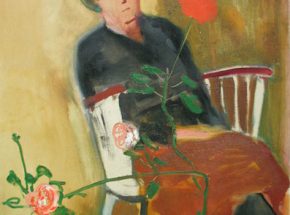

Consuelo Kanaga was born in Astoria, Oregon, in 1894. Kanaga became a journalist with the San Francisco Chronicle in 1915. She joined the California Camera Club where she met Dorothea Lange.
In 1922 Kanaga moved to New York where she became a photojournalist with the New York American. She exhibited with the Group f/64 but never became a member. Kanaga, a socialist, began working with radical journals such as the New Masses and lectured at the Photo League. In 1936 she worked for Index of American Design, a Works Progress Administration (WPA) project.
Some of Kanaga’s photographs appeared in The Family of Man, an exhibition organized by Edward Steichen in 1955. In the 1960s Kanaga worked as a covering the struggle for African American civil rights. Consuelo Kanaga died in New York in 1978.
www.spartacus.schoolnet.co.uk/USAPkanaga.htm
Born in Astoria, Oregon, Consuelo Kanaga came from a family that valued ideals of social justice. After completing high school, she began writing for the San Francisco Chronicle in 1915. Within three years, she had learned darkroom technique from the paper’s photographers and became a staff photographer. She met photographers Imogen Cunningham, Edward Weston, and Dorothea Lange through the California Camera Club, and was interested in the fine-art photography in Alfred Stieglitz’s Camera Work. A series of three marriages and one canceled engagement precipitated Kanaga’s periodic relocations between New York and San Francisco, where she established a portrait studio in 1930. While not an official member of the f/64 group, her images were exhibited in its first exhibition at San Francisco’s M. H. de Young Memorial Museum in 1932. Kanaga was involved in West Coast liberal politics, and when she returned to New York in 1935, she was associated with the leftist Photo League; she lectured there in 1938 with Aaron Siskind, then occupied with his Harlem Document. Her photography was championed by Edward Steichen, who included her in The Family of Man exhibition in 1955 (Museum of Modern Art, New York City). Kanaga’s work was featured in the 1979 International Center for Photography (New York) exhibition Recollections: Ten Women of Photography, and she was the subject of a retrospective at the Brooklyn Museum of Art (New York) in 1992.
In terms of photographic technique and depiction of subjects, romantic instincts characterize Kanaga’s work. An advocate for the rights of African-Americans and other people of color, Kanaga distinguished her portraits from the documentary images of the Farm Security Administration by conveying her subject’s physical comfort and personal pride. The tactile sense of volume in her work is reinforced by strong contrasts in printing light and dark forms.
Meredith Fisher: Handy et al. Reflections in a Glass Eye: Works from the International Center of Photography Collection, New York: Bulfinch Press in association with the International Center of Photography, 1999, p. 219.





